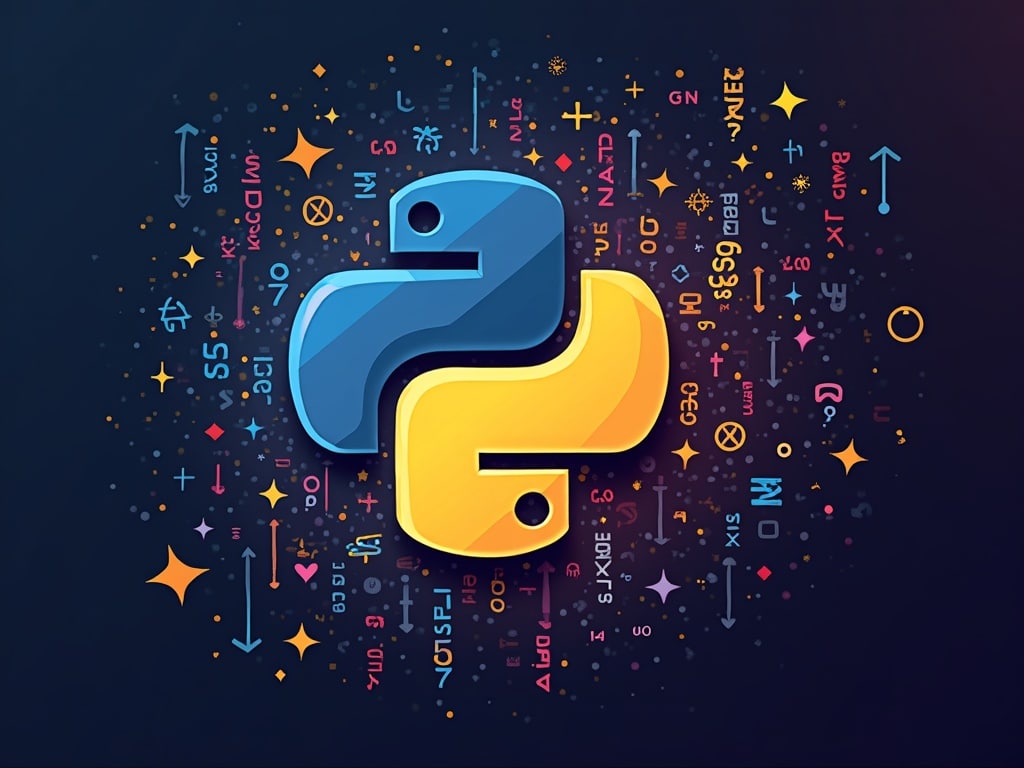Basic Python Code Examples: A Beginner’s Guide
So, you’re ready to dive into the world of Python? Excellent choice! Python’s versatility and readability make it a fantastic language for beginners and experienced programmers alike. Forget wrestling with arcane syntax and cryptic error messages; Python welcomes you with open arms (and clear, concise code!). This guide will walk you through some fundamental Python code examples, equipping you with the building blocks to start creating your own programs. We’ll cover everything from printing messages to the screen to working with data structures and controlling program flow. Get ready to unleash your inner coder!
Printing to the Console: Your First Hello, World!
Every programming journey begins with the quintessential Hello, World! program. It’s a rite of passage, a symbol of your first successful interaction with the machine. In Python, it’s delightfully simple:
print(Hello, World!)
That’s it! The print() function does exactly what it says: it prints the specified text to the console. The text, enclosed in double quotes, is called a string. Run this code, and you’ll see the greeting appear on your screen. Congratulations, you’ve written your first Python program!
Printing Variables: Adding Some Dynamic Flavor
But printing just static text can get boring quickly. Let’s introduce variables, which act as containers for storing data. Here’s how you can print the value of a variable:
message = Hello, Python!
print(message)
In this example, we first assign the string Hello, Python! to the variable named message. Then, we use the print() function to display the value stored in that variable. You can change the value of message to anything you like, and the output will reflect the change.
Working with Numbers: Basic Arithmetic Operations
Python isn’t just about text; it’s also a powerful tool for performing mathematical calculations. Let’s explore some basic arithmetic operations:
# Addition
sum = 5 + 3
print(sum) # Output: 8
# Subtraction
difference = 10 - 4
print(difference) # Output: 6
# Multiplication
product = 6 7
print(product) # Output: 42
# Division
quotient = 20 / 5
print(quotient) # Output: 4.0
# Exponentiation (raising to a power)
power = 2 3
print(power) # Output: 8
# Modulo (remainder after division)
remainder = 17 % 5
print(remainder) # Output: 2
This code demonstrates addition, subtraction, multiplication, division, exponentiation, and the modulo operator. Notice that division always returns a floating-point number (a number with a decimal point), even if the result is a whole number. The modulo operator is particularly useful for determining if a number is even or odd (if number % 2 is 0, the number is even).
Data Types: Understanding the Building Blocks
Every value in Python has a data type, which determines the kind of data it represents and the operations you can perform on it. Here are some fundamental data types:
- Integer (
int): Whole numbers (e.g., 5, -10, 0). - Float (
float): Numbers with decimal points (e.g., 3.14, -2.5, 0.0). - String (
str): Sequences of characters (e.g., Hello, Python, 123). - Boolean (
bool): Represents truth values, eitherTrueorFalse.
You can use the type() function to determine the data type of a value:
print(type(10)) # Output: <class 'int'>
print(type(3.14)) # Output: <class 'float'>
print(type(Text)) # Output: <class 'str'>
print(type(True)) # Output: <class 'bool'>
Working with Strings: Manipulating Text
Strings are an essential part of most programs, allowing you to work with text data. Python provides a rich set of tools for manipulating strings.
String Concatenation: Combining Strings
You can combine strings using the + operator:
first_name = John
last_name = Doe
full_name = first_name + + last_name
print(full_name) # Output: John Doe
Remember to include spaces where needed to create readable text.
String Formatting: Inserting Values into Strings
String formatting allows you to insert values into strings in a controlled manner. A common method is using f-strings (formatted string literals):
name = Alice
age = 30
message = fMy name is {name} and I am {age} years old.
print(message) # Output: My name is Alice and I am 30 years old.
F-strings are created by prefixing the string with an f. You can then embed expressions inside curly braces {}, which will be evaluated and inserted into the string. This is a clean and readable way to create dynamic strings.
String Methods: Powerful Text Manipulation
Python provides numerous methods for working with strings, such as converting case, finding substrings, and stripping whitespace.
text = Python is fun!
# Convert to lowercase
lower_text = text.lower()
print(lower_text) # Output: python is fun!
# Convert to uppercase
upper_text = text.upper()
print(upper_text) # Output: PYTHON IS FUN!
# Strip leading/trailing whitespace
stripped_text = text.strip()
print(stripped_text) # Output: Python is fun!
# Find a substring
index = text.find(fun)
print(index) # Output: 13
# Replace a substring
replaced_text = text.replace(fun, amazing)
print(replaced_text) # Output: Python is amazing!
These are just a few examples; explore the Python documentation for a complete list of string methods.

Lists: Organizing Your Data
Lists are ordered collections of items. They are versatile and can hold items of different data types.
Creating a List: Defining Your Collection
You create a list by enclosing items in square brackets [], separated by commas:
my_list = [1, 2, apple, 3.14, True]
print(my_list) # Output: [1, 2, 'apple', 3.14, True]
Accessing List Elements: Retrieving Data
You can access individual elements in a list using their index, starting from 0:
print(my_list[0]) # Output: 1
print(my_list[2]) # Output: apple
print(my_list[-1]) # Output: True (accessing the last element)
Modifying Lists: Adding, Removing, and Changing Elements
Lists are mutable, meaning you can change their contents after creation.
# Add an element to the end of the list
my_list.append(banana)
print(my_list) # Output: [1, 2, 'apple', 3.14, True, 'banana']
# Insert an element at a specific index
my_list.insert(1, orange)
print(my_list) # Output: [1, 'orange', 2, 'apple', 3.14, True, 'banana']
# Remove an element by value
my_list.remove(apple)
print(my_list) # Output: [1, 'orange', 2, 3.14, True, 'banana']
# Remove an element by index
del my_list[0]
print(my_list) # Output: ['orange', 2, 3.14, True, 'banana']
# Change an element
my_list[0] = grape
print(my_list) # Output: ['grape', 2, 3.14, True, 'banana']
Conditional Statements: Making Decisions
Conditional statements allow your program to make decisions based on conditions.
The if Statement: Executing Code Based on a Condition
The if statement executes a block of code only if a condition is true:
age = 20
if age >= 18:
print(You are eligible to vote.)
The if-else Statement: Handling Two Possibilities
The if-else statement executes one block of code if the condition is true and another block if it’s false:
age = 16
if age >= 18:
print(You are eligible to vote.)
else:
print(You are not eligible to vote yet.)
The if-elif-else Statement: Handling Multiple Conditions
The if-elif-else statement allows you to check multiple conditions in a sequence:
score = 85
if score >= 90:
print(Grade: A)
elif score >= 80:
print(Grade: B)
elif score >= 70:
print(Grade: C)
else:
print(Grade: D)
Loops: Repeating Actions
Loops allow you to repeat a block of code multiple times. There are two main types of loops in Python: for loops and while loops.
The for Loop: Iterating Over a Sequence
The for loop iterates over a sequence (e.g., a list, a string, or a range of numbers):
# Iterating over a list
fruits = [apple, banana, cherry]
for fruit in fruits:
print(fruit)
# Iterating over a range of numbers
for i in range(5):
print(i) # Output: 0 1 2 3 4
The range() function generates a sequence of numbers. range(5) generates numbers from 0 to 4.
The while Loop: Repeating While a Condition is True
The while loop repeats a block of code as long as a condition is true:
count = 0
while count < 5:
print(count)
count += 1 # Increment the counter
Be careful to ensure that the condition eventually becomes false; otherwise, the loop will run forever (an infinite loop)! It’s good practice to include a counter, like in the example above.
Functions: Organizing Your Code into Reusable Blocks
Functions are reusable blocks of code that perform a specific task. They help you organize your code and avoid repetition.
Defining a Function: Creating a Reusable Block
You define a function using the def keyword:
def greet(name):
This function greets the person passed in as a parameter.
print(fHello, {name}!)
# Calling the function
greet(World) # Output: Hello, World!
greet(Alice) # Output: Hello, Alice!
The Docstring is used to document the function; it’s a good practice to include a docstring to explain what the function does. The `name` variable in parentheses is a parameter that the function accepts. Functions can accept multiple parameters, or none at all.
Returning Values: Sending Results Back
Functions can return values using the return statement:
def add(x, y):
This function returns the sum of x and y.
return x + y
# Calling the function and storing the result
result = add(5, 3)
print(result) # Output: 8
Conclusion: Your Python Journey Begins
These basic Python code examples provide a solid foundation for your programming journey. Practice writing and modifying these examples, and don’t be afraid to experiment and explore. The best way to learn is by doing! As you progress, you’ll discover the vast capabilities of Python and its diverse applications, from web development and data science to machine learning and automation. Embrace the challenge, have fun, and happy coding!
